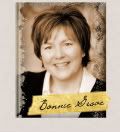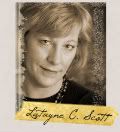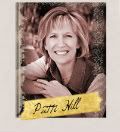 We have the distinct pleasure of having acclaimed author Athol Dickson as our guest today. This post originally appeared on Novel Journey on June 16. We enjoyed it very much and thought you would too. Our special thanks to Athol and Novel Journey for allowing us to republish it.
We have the distinct pleasure of having acclaimed author Athol Dickson as our guest today. This post originally appeared on Novel Journey on June 16. We enjoyed it very much and thought you would too. Our special thanks to Athol and Novel Journey for allowing us to republish it.IT'S EASIER TO WRITE ABOUT BEAUTY than it is to write beautifully, because the difference between good craftsmanship and beautiful writing is something like the difference between goodness and morality.
Consider C.S. Lewis on that topic:
"Morality is a mountain which we cannot climb by our own efforts; and if we could we should only perish in the ice and unbreathable air of the summit, lacking those wings with which the rest of the journey has to be accomplished. For it is from there that the real ascent begins. The ropes and axes are 'done away' and the rest is a matter of flying" ("Man or Rabbit?"
God in the Dock, p. 113, Eerdman's, 1970).
Beauty is goodness, and like the ability to be good, the ability to write beautifully is a gift which can't be earned, or learned. Some authors are able to take off from the summit of good craftsmanship and fly; it's as simple and mysterious as that.
But although there is an aspect to beautiful writing which we cannot teach, all beautiful novels share certain common qualities which are worth examination.
Following are seven characteristics of a beautiful novel:
HopeBeautiful novels often take us deep into the darkest corners of the human condition, but in the end, they usually leave us with a sense of hope. This is only natural, because hope is one of the primary purposes of beauty.
In
The Divine Conspiracy, Dallas Willard writes, ". . . roughly speaking, God relates to space as we do to our body. He occupies and overflows it but cannot be localized in it."
This means every beautiful sunset, every beautiful flower, every thing of beauty which exists is a manifestation of God's spirit in creation. As divine manifestation, natural beauty of every kind whispers the glorious truth, "We are not alone so be of good cheer; there is hope." And in one way or another, the most beautiful of novels all say it, too.
SymbolismOur minds initially respond to beauty on a subliminal level. We sense the beauty of a sunset as a feeling before we become consciously aware of it as a fact. This is why beautiful novels always speak to us on levels deeper than our conscious thought.
The main way novels do this is through symbolism, because symbols are the language of the human mind. Everything processed by our brains is classified, memorized, and organized through symbols. Even the language that we use is composed of symbols (the words and letters I am writing now).
In beautiful novels, very little meaning is limited to the obvious. Characters stand for good or evil. Settings stand for peace or persecution. Events stand for destiny or chaos. When such things act, speak, or occur, or when the story passes through them, our subconscious attends to it with deep-seated emotions, which arise before we are aware of them as facts, exactly as we might respond to sunsets or any other manifestation of natural beauty.
SimplicityBeauty demands our attention. How many times have you "missed" a beautiful sunset which was right there before your eyes, simply because you were distracted? This is why beautiful novels are inevitably simple.
I don't mean beautiful novels don't have complicated plots or complex characters. I mean the story is presented in a way the mind can follow without losing track of all the elements that make it beautiful.
Craftsmanship accounts for much of this simplicity. Extraneous adjectives and adverbs are shunned. Pointless repetition of ideas is avoided. Each new idea builds logically on what went before, and establishes a context for the ideas that follow in an unbroken chain which guides the mind effortlessly through the fictive dream.
Of course, there are dozens of other "rules" designed to simplify the reader's experience with good fiction. Beautiful novels are simple in the sense that they are easily read, but as every novelist knows, to write simply is anything but easy.
RhythmThere is a rhythm to all that's beautiful in nature. Tides. Waves. Heartbeats. Seasons. Beautiful novels pay attention to the force of rhythm. They align themselves to it with cadenced syllables and words.
The novelist who writes beautifully is constantly aware of how her words will "sound" in her reader's mind. She reads her work aloud, and if it does not flow with poetic meter, she may insert a comma just to slow things down, even though the technical rules of craftsmanship might forbid it. She may select the longer of two synonyms just to add the extra syllable. She gives her mental "tongue" a moment's pause between her vowels by adding consonants or punctuation or a paragraph return.
Beautiful novels also align rhythms with ideas. If the action is dangerous or rapid, sentences are shorter. Often incomplete. Words are shorter. Syllables are shorter. Then the rhythm might be broken with something longer, just to put the reader off balance. No effort is given to similes.
Thus the reader senses urgency and haste. But if the time has come to slow the reader down and give a sense of peace, sentences and words and syllables may stretch out on and on with repetition, flowing one into another, each opening the way for what will follow like a river winding through the countryside. In these ways, a beautiful novel reflects the way rhythms speak to us in nature.
IntuitionAs I mentioned earlier, natural beauty first approaches us subliminally, usually as a feeling of joy and delight. Only then do we think about a sunset rationally. And much as symbolism allows readers to tap into the subconscious nature of beauty without fully understanding what is happening, so authors who write beautiful novels make countless creative choices they cannot logically explain.
This is true on the macro level, with choices about characterization, plot direction, and so forth. It is equally true on the micro level, with particular word choices made to support a particular mood or atmosphere within the reader's imagination.
On what basis is one word chosen over another with the same meaning? Although logic often fails to explain the choices, the choices are effective. Consider for example the following synonyms:
Fecund versus fertile
Nude versus naked
Dank versus damp
Ruddy versus scarlet
Stout versus strong
A novelist capable of producing beauty will sense that the words listed on the left belong together in one group, and the ones listed on the right belong to another. The novelist knows this, but it is not a rational kind of knowing. That is why it cannot be taught. It is known tacitly, or intutitvely, and beauty in a novel comes in part from paying close attention to this intuition.
VarietyEverywhere we look in nature we see incredible diversity. No two snowflakes, stones or blades of grass are identical. This too is part of natural beauty, and this too is reflected in beautiful novels.
Tragedies have comic moments. Comedies have serious morals. Characters behave against type. Plots take minor detours. The noun precedes the verb in two sentences, followed with a verb before the noun in a third. A paragraph with three longish sentences is capped off tersely with one word. Paragraph and chapter lengths are unpredictable.
These choices are not practical. They don't improve the quality of communication. They save no time. They are done for one reason only: beauty demands variety.
EchoesHumankind's first experience with natural beauty was in a garden. We were banished from that garden, and humanity's history is the story of our longing to return. These facts are imprinted in everyone's imagination, believer and unbeliever alike. The proof is in the way the pattern of returning reappears in every novel we call beautiful. (It's also found in all great music, but that's another story.)
We see this echo in the repetition of certain words throughout beautiful novels. We see it in the way some events are brought back to the surface through characters' memories or flashbacks. It is in the way symbols reappear over and over, and in the way the same descriptions are applied first to one thing, and then to another.
A question asked in the first scene is asked again three hundred pages later in the final paragraph. An image seen when we first met a character is seen again when that same character departs the stage forever. Words spoken in one situation are repeated verbatim in another, with the double power of a new meaning in the second situation, and the harkening back to what they meant before.
By echoing the beginning in the end, a novel can awaken memories of primordial beauty with a whisper to our subconscious mind, "Turn back. Turn back. Turn back to the garden."
Athol Dickson is a novelist, teacher, and publisher of the DailyCristo website. His novels transcend description with a literary style that blends magical realism, suspense, and a strong sense of spirituality. Critics have favorably compared his work to such diverse authors as Octavia Butler (Publisher's Weekly) and Flannery O'Connor (The New York Times). One of his novels is an Audie Award winner and three have won Christy Awards including his most recent novel, Lost Mission. His next story, The Opposite of Art is about pride, passion, and death as a spiritual pursuit. Look for it in September, 2011. Athol lives with his wife in southern California.
 One of the elements Athol mentioned was Symbolism. One great source of information about biblical symbolism is the Dictionary of Biblical Imagery, whose subtitle is: An encyclopedic exploration of the images, symbols, motifs, metaphors, figures of speech and literary patterns of the Bible.
One of the elements Athol mentioned was Symbolism. One great source of information about biblical symbolism is the Dictionary of Biblical Imagery, whose subtitle is: An encyclopedic exploration of the images, symbols, motifs, metaphors, figures of speech and literary patterns of the Bible. Beauty is many things to many people. As I read Athol's post, Ikeptthinking that perhaps "organic" would be a better word. Using "organic" wouldanswer the question of why such writing cannot be taught. Because it's already in you. It's defeating for a writer who is just starting out to believe he or she may be incapable of beautiful writing because of a lack of enigmatic gifting. Beautiful writing is honest. Stripped of pretense, it shines with naked humanity. Beautiful writing comes from the raw experience of life on the planet, and is tended to in the soil of the writer's soul. Organic writing can be harvested by anyone with the patience to bring it up a teaspoon at a time. You can only use a teaspoon because soul matter is dense with meaning, and complex in structure. One small measure at a time is all we can handle. Yes, we must all work hard on our craft. And when it comes to our art, we must practice organic writing -- hauling up the deepest truths -- and we will find our stories will be the beauty of bare honesty which touches the soul of everyone who reads them.
Beauty is many things to many people. As I read Athol's post, Ikeptthinking that perhaps "organic" would be a better word. Using "organic" wouldanswer the question of why such writing cannot be taught. Because it's already in you. It's defeating for a writer who is just starting out to believe he or she may be incapable of beautiful writing because of a lack of enigmatic gifting. Beautiful writing is honest. Stripped of pretense, it shines with naked humanity. Beautiful writing comes from the raw experience of life on the planet, and is tended to in the soil of the writer's soul. Organic writing can be harvested by anyone with the patience to bring it up a teaspoon at a time. You can only use a teaspoon because soul matter is dense with meaning, and complex in structure. One small measure at a time is all we can handle. Yes, we must all work hard on our craft. And when it comes to our art, we must practice organic writing -- hauling up the deepest truths -- and we will find our stories will be the beauty of bare honesty which touches the soul of everyone who reads them. I love that Bonnie connected organic writing with beauty with truth. Perhaps the best part of good fiction is that it tells the truth -- not truisms, but something real we've scratched from our own soil, at cost to ourselves. That lovely feeling we get when we read great writing may be gratitude, that someone had the courage of bare honesty. It takes faith: the writer must believe that truth is always beautiful, no matter how it looks at first glance. I have a painting in my living room, painted by a Japanese artist my husband once knew, of a burnt tree in a snowbank on a winter day. It reflects an esthetic that finds beauty in sorrow and loss. In Brennan Manning's novel, Patched Together, the main character must walk through "the dazzling darkness of sheer trust," before he reaches the "Cave of Bright Darkness," where he meets . . . Well. The novel ends on "A good day. A very good day."
I love that Bonnie connected organic writing with beauty with truth. Perhaps the best part of good fiction is that it tells the truth -- not truisms, but something real we've scratched from our own soil, at cost to ourselves. That lovely feeling we get when we read great writing may be gratitude, that someone had the courage of bare honesty. It takes faith: the writer must believe that truth is always beautiful, no matter how it looks at first glance. I have a painting in my living room, painted by a Japanese artist my husband once knew, of a burnt tree in a snowbank on a winter day. It reflects an esthetic that finds beauty in sorrow and loss. In Brennan Manning's novel, Patched Together, the main character must walk through "the dazzling darkness of sheer trust," before he reaches the "Cave of Bright Darkness," where he meets . . . Well. The novel ends on "A good day. A very good day."
 When I first read Athol's post on Novel Journey, I was touched by his statement that, "Beautiful novels often take us deep into the darkest corner of the human condition, but in the end, they usually leave us with a sense of hope." I believe that as a reader and I believe that as a writer. There's no novel so satisfying to me, than a novel that does exactly what Athol described. It's that line that drew me to his post in the first place, but there was something in each of his points that spoke to me. In the paragraph on Simplicity, Athol concludes, "Beautiful novels are simple in the sense that they are easily read, but as every novelist knows, to write simply is anything but easy." That is so true. It happens when a writer is careful about every idea, every scene, and every word; the macro and the mirco of the work. Each part must count and carry its own weight. I love to happen upon a line in a novel that represents the idea that Athol put forth, when you know the author was careful to find the exact and unexpected word to make just the right point. I never pass by with pausing a moment in my appreciation.
When I first read Athol's post on Novel Journey, I was touched by his statement that, "Beautiful novels often take us deep into the darkest corner of the human condition, but in the end, they usually leave us with a sense of hope." I believe that as a reader and I believe that as a writer. There's no novel so satisfying to me, than a novel that does exactly what Athol described. It's that line that drew me to his post in the first place, but there was something in each of his points that spoke to me. In the paragraph on Simplicity, Athol concludes, "Beautiful novels are simple in the sense that they are easily read, but as every novelist knows, to write simply is anything but easy." That is so true. It happens when a writer is careful about every idea, every scene, and every word; the macro and the mirco of the work. Each part must count and carry its own weight. I love to happen upon a line in a novel that represents the idea that Athol put forth, when you know the author was careful to find the exact and unexpected word to make just the right point. I never pass by with pausing a moment in my appreciation.






















